
Carol & John's Comic Book Shop in Cleveland Ohio is the place to be on #freecomicbookday. This shop appeared briefly in the film, American Splendor.

Carol & John's Comic Book Shop in Cleveland Ohio is the place to be on #freecomicbookday. This shop appeared briefly in the film, American Splendor.
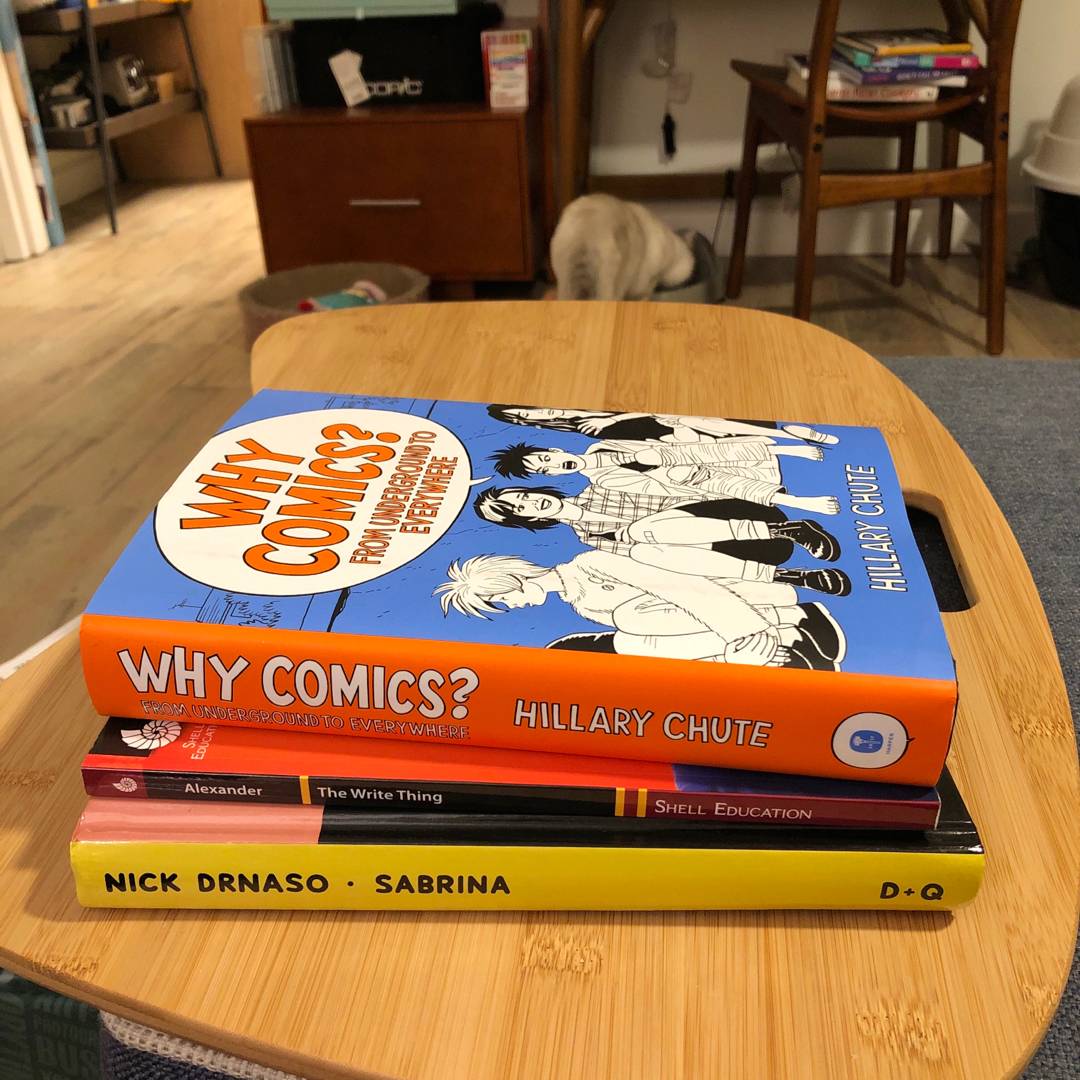
New books. Couldn‘t help myself! 🤷🏻♀️😎

An eloquent exploration of comics format and its importance as a contemporary cultural medium. Be prepared for somewhat academic prose, but that‘s what‘s needed for this deep dive taken by an expert. Some of the major themes studied include disaster, sex, disability, girlhood, war, & queerness. I learned a lot & have a better understanding of why I enjoy reading comics.
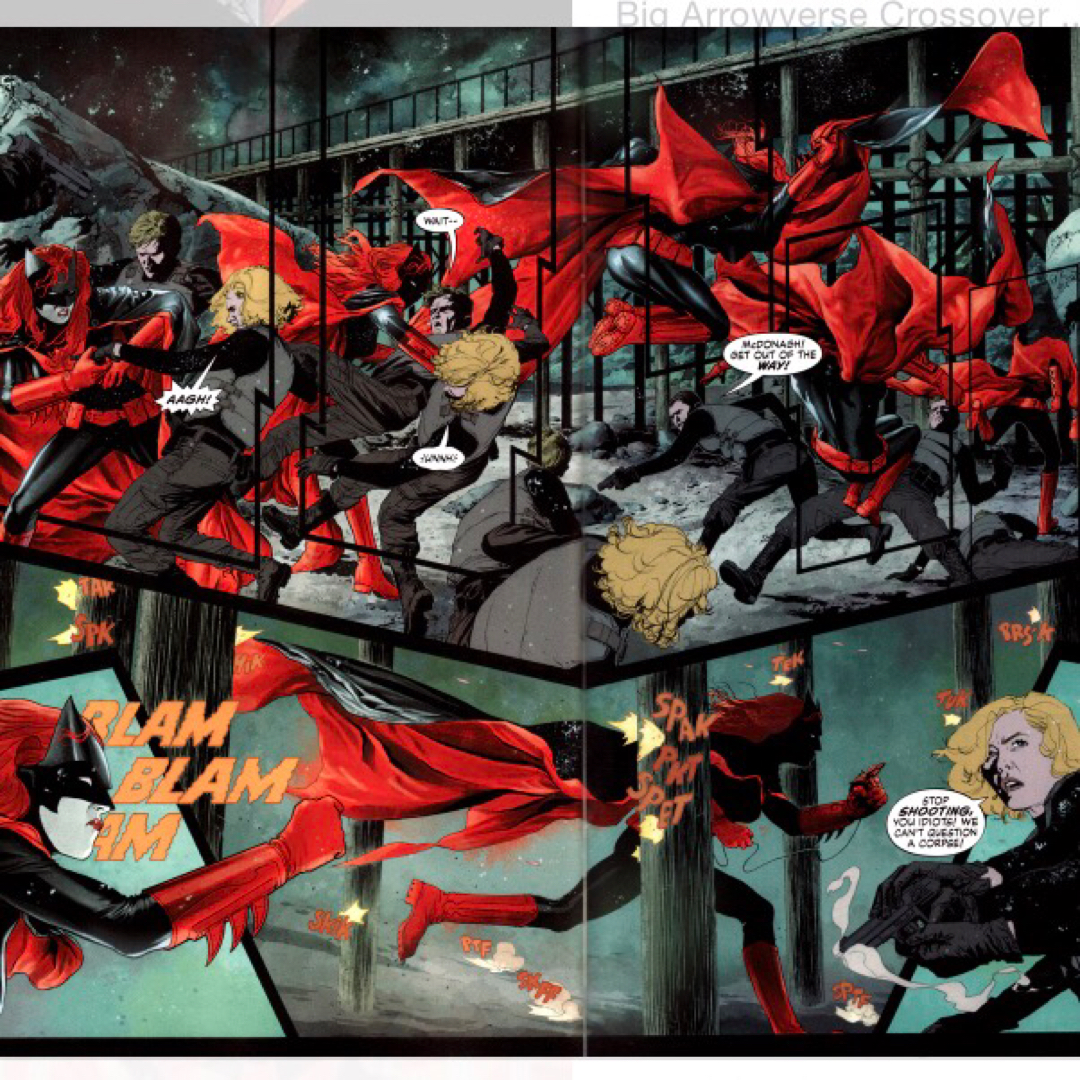
Comics does not propose linear reading in the same way prose does. Cognitively, one‘s eye usually first takes in the full page, even when one decides to start in the upper left corner & move left to right. This is sometimes called comics‘ “all-at-onceness,” or its “symphonic effect.” Reading can happen in all directions; this open-endedness & attention to choice in how one interacts with the pages is a part of the appeal of comics narrative.
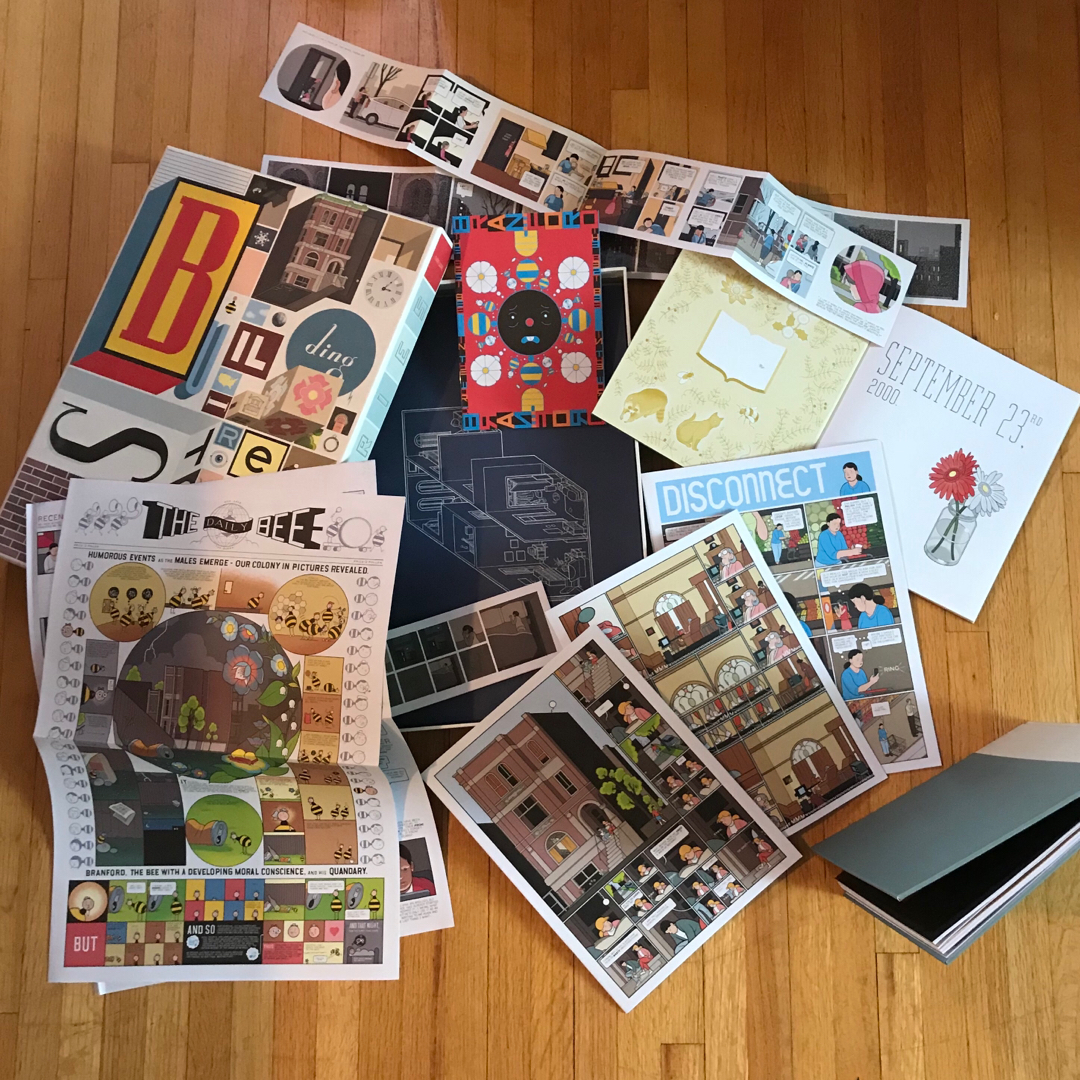
The title Building Stories asks readers to think about domestic dwelling spaces & how they affect & are affected by people: the stories that come from buildings. It also asks readers, with its 3-dimensional collection of loose objects in a box, to think about the book itself as a kind of built space that gets completed through the individual process of reading: How does one build a story?
(My copy of Chris Ware‘s Building Stories is above.)
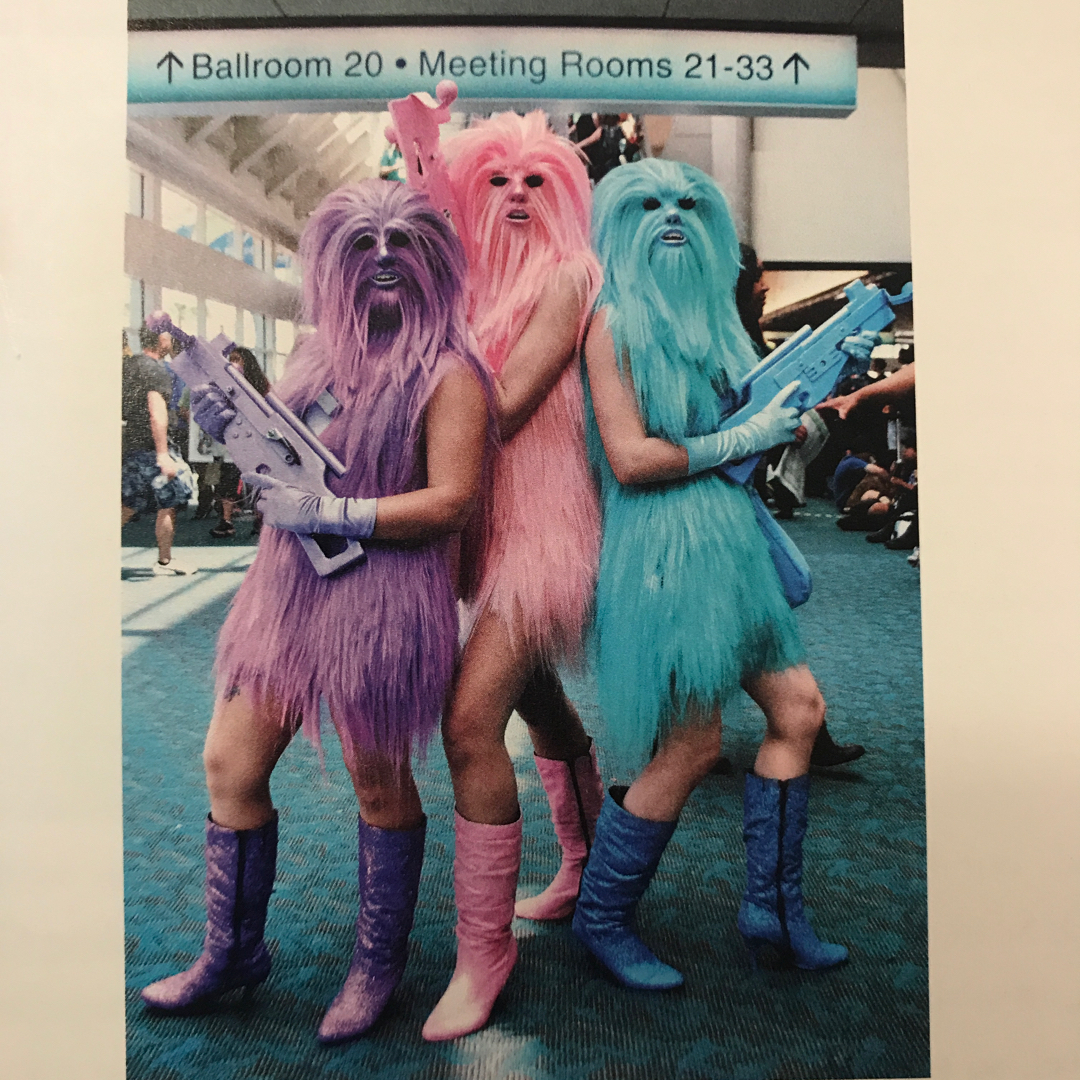
Fan sites and fan publications in many instances provide the most detailed, interesting facts and insights about a work, creator or movement; oftentimes much less is gleaned from a comparable scholarly article. This has been a major lesson for me as a scholar of comics.
(Photo ‘Chewie‘s Angels‘ San Diego Comic-Con, 2016, by Keith Plocek.)
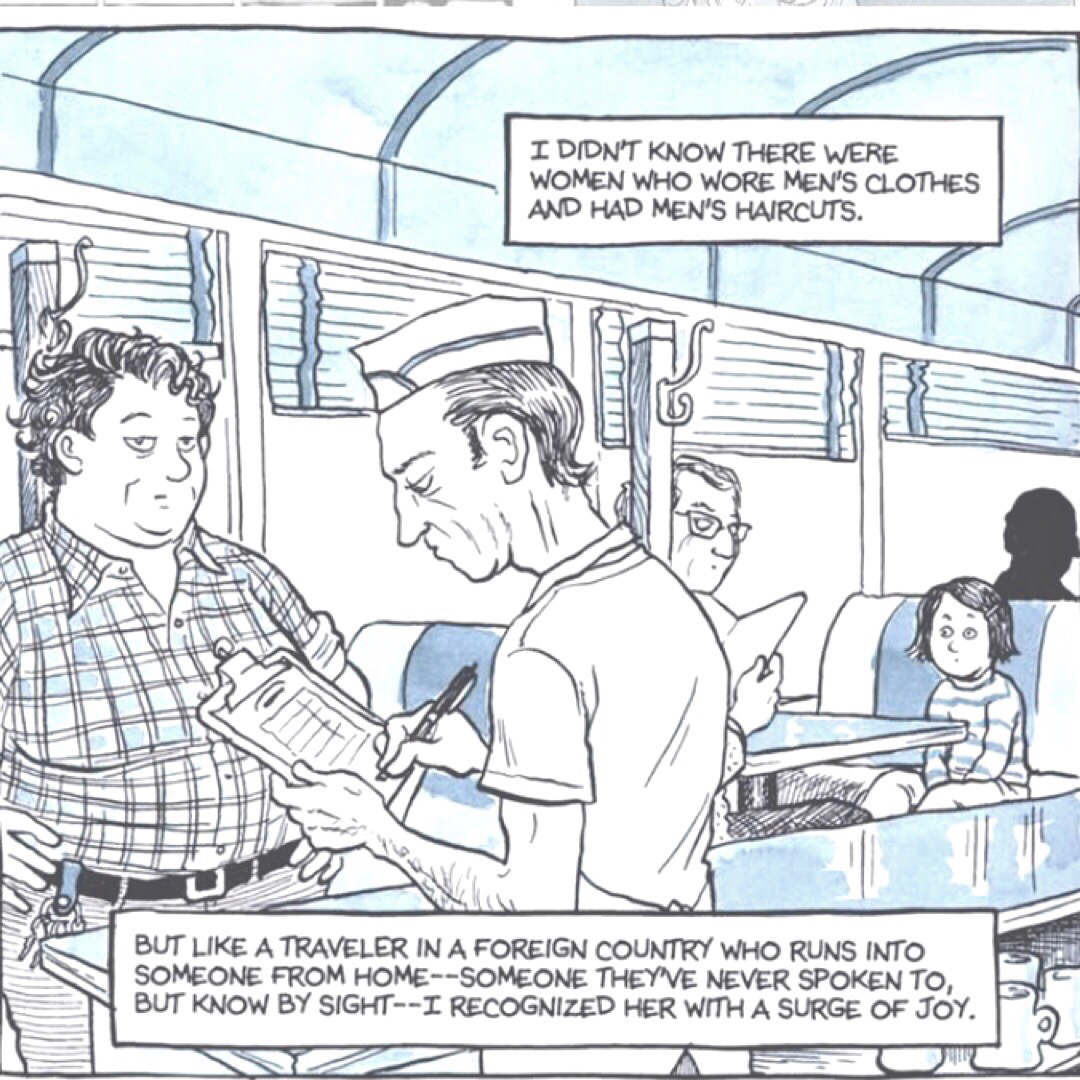
In Fun Home, Bechdel uses two different representational styles: one that is heavily crosshatched, which is used for drawing the tone of photographs, & codes as realistic, & one that has crisper black line art & simpler shading, which anchors the world of the book. There‘s also a gray-green ink wash throughout that Bechdel has described as “elegiac.”
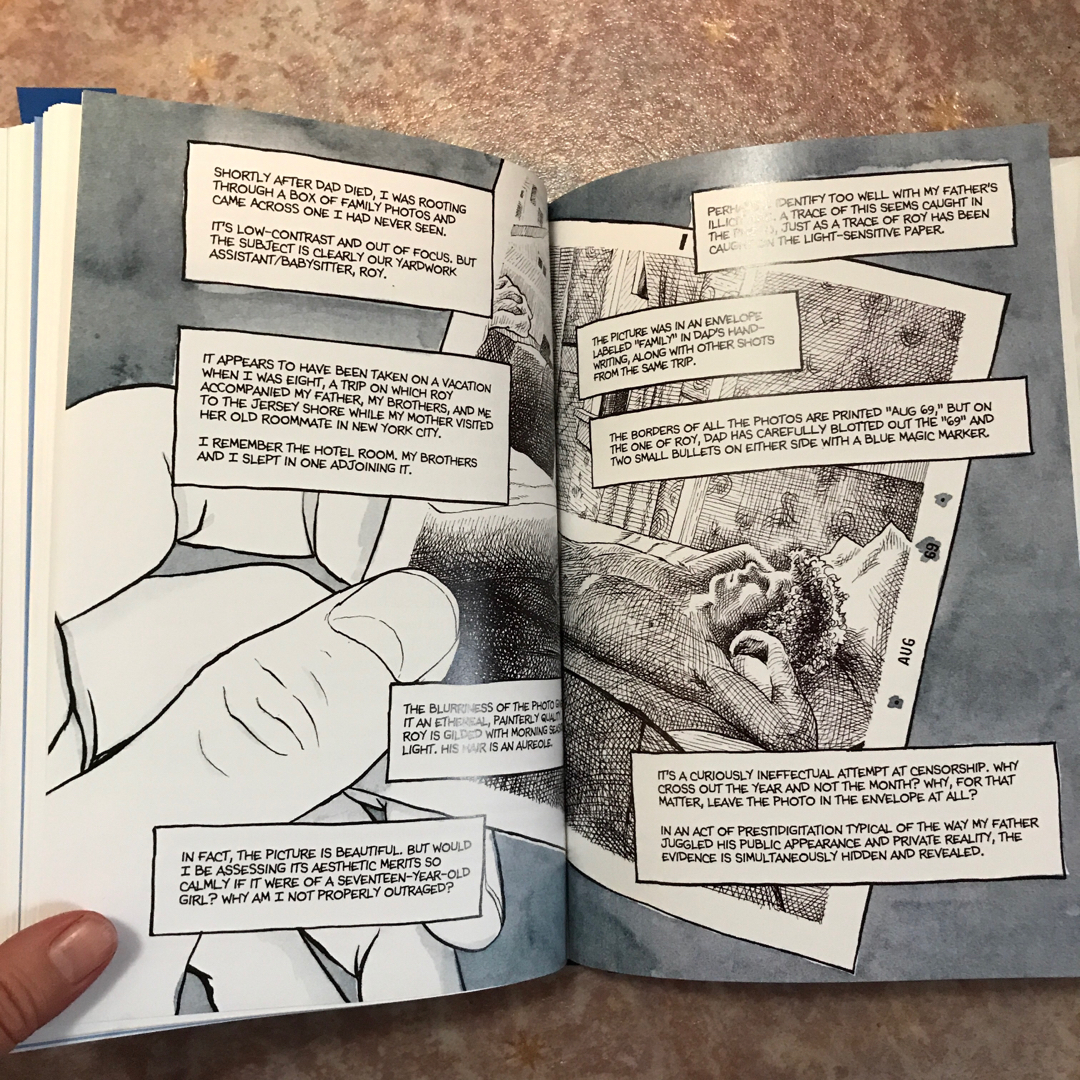
The drawing of the Roy photograph, which arrives roughly halfway through the book, is “literally the core of the book,” Bechdel told me, its own “centrefold.” Bechdel‘s drawing of the photo is her book‘s only double-spread, and the space it takes up underlines its key role in shaping the premise of Fun Home.
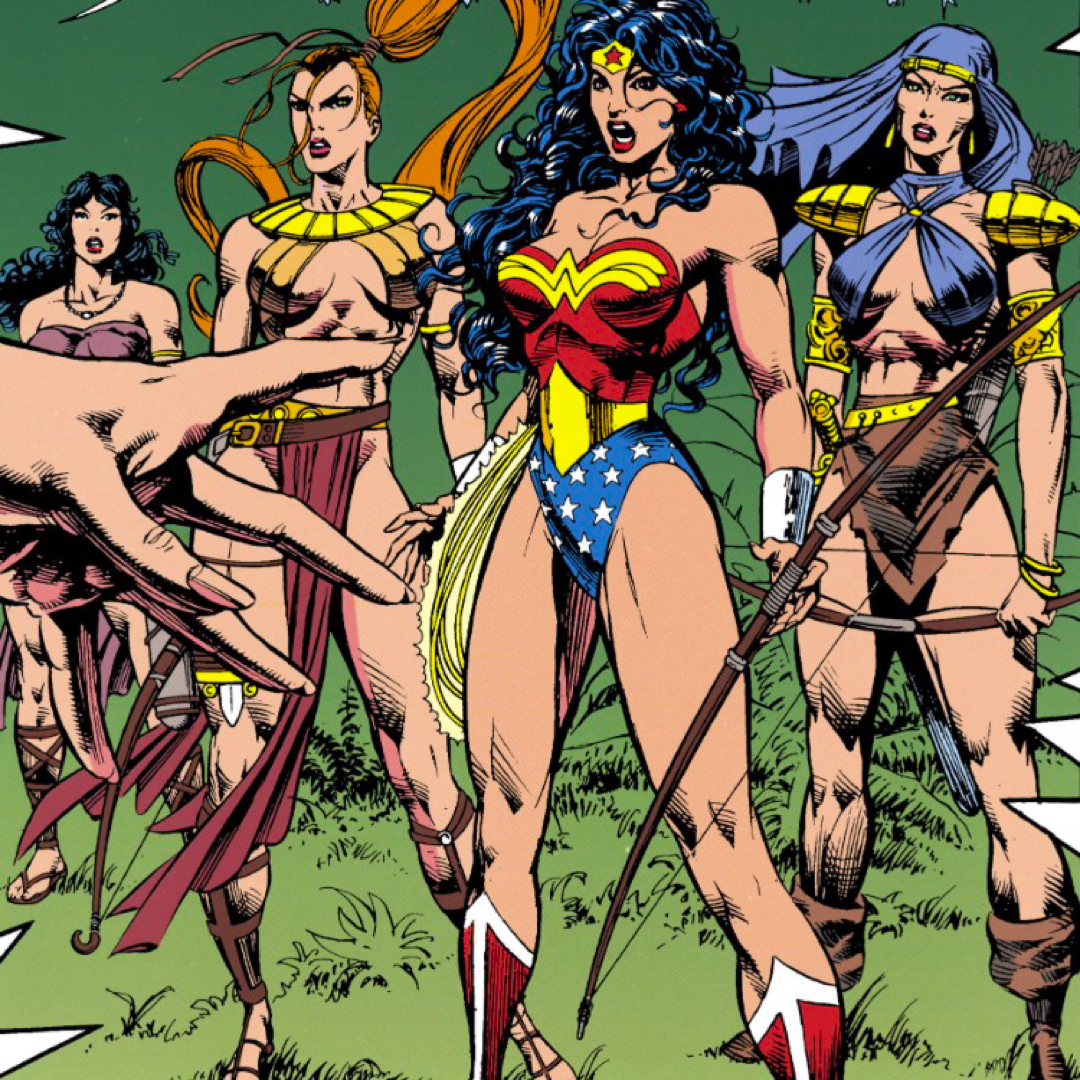
In the 1950s Batman & Robin, & Wonder Woman, were suspected to be gay & therefore a negative influence. Dr Frederic Wertham wrote, “the homosexual connotation of the Wonder Woman type of story is psychologically unmistakable …For girls she is a morbid ideal.”
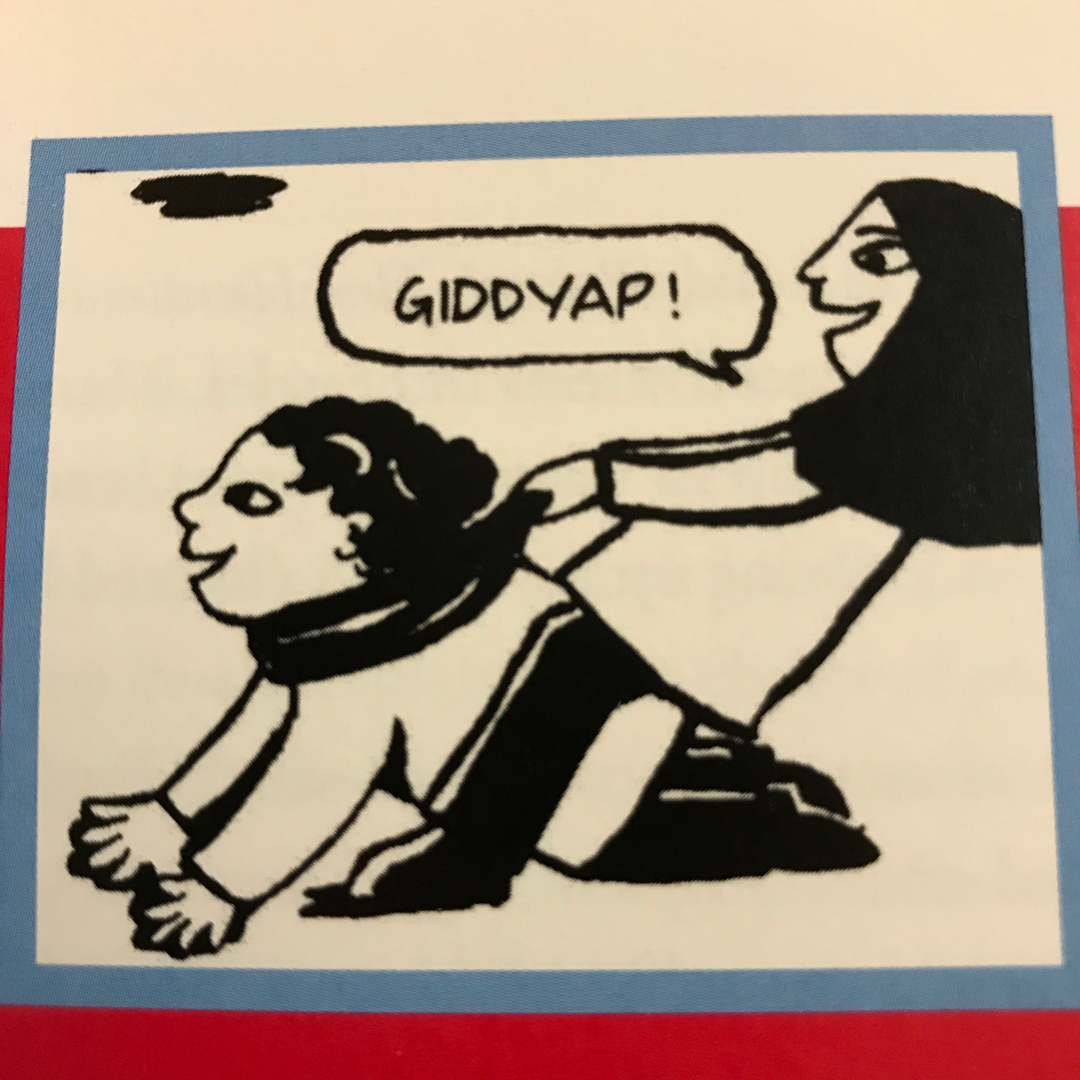
…comics can evoke childhood, & particularly girlhood, so powerfully. Narratives of growth, of hybrid identities & developing selves, make sense—and flourish—in comics. This is because of the form‘s diary-like intimacy—its handwritteness—and its ability to take both granular & synthetic views at once.
(Image: Marjane Satrapi)
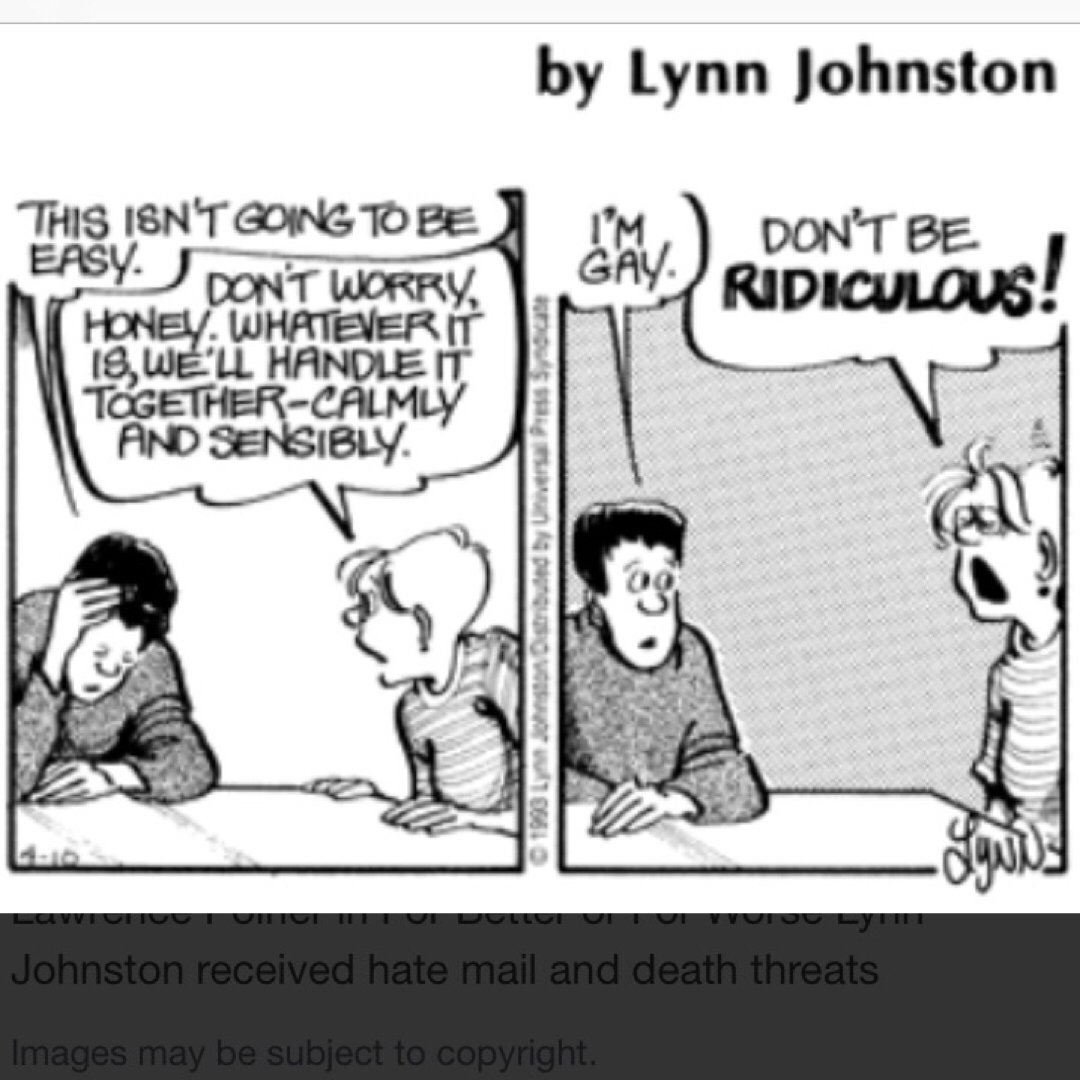
It may be hard to remember or imagine just how unusual sensitive gay content was for the ‘funny pages‘ of mainstream newspapers even 25 years ago, but within a week, 19 papers had cancelled For Better or For Worse outright, many more had suspended the strip, and Johnston went on to receive over 2,500 personal letters (in the days before email) including death threats. ‘I learned that the comics page is a powerful communicator,‘ Johnston writes.
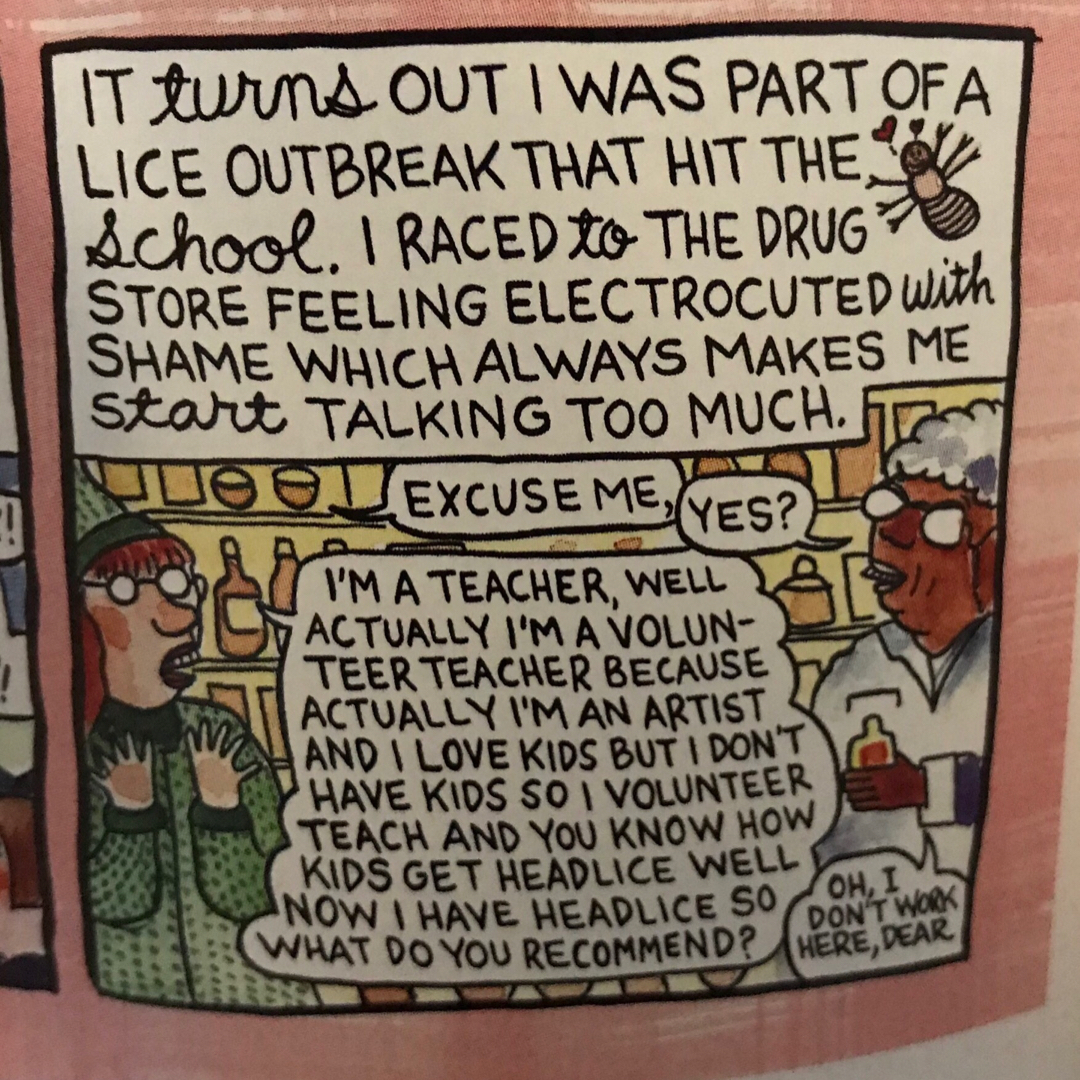
The mix of lowercase and uppercase brush-painted lettering has no narrative function, but it does have a visual function. It is decorative, and in its unpredictability and ornamental quality, it asks a reader to be aware of the body whose hand creates the comics; it ruffles the surface of the page.
(Image from Lynda Barry‘s One Hundred Demons)
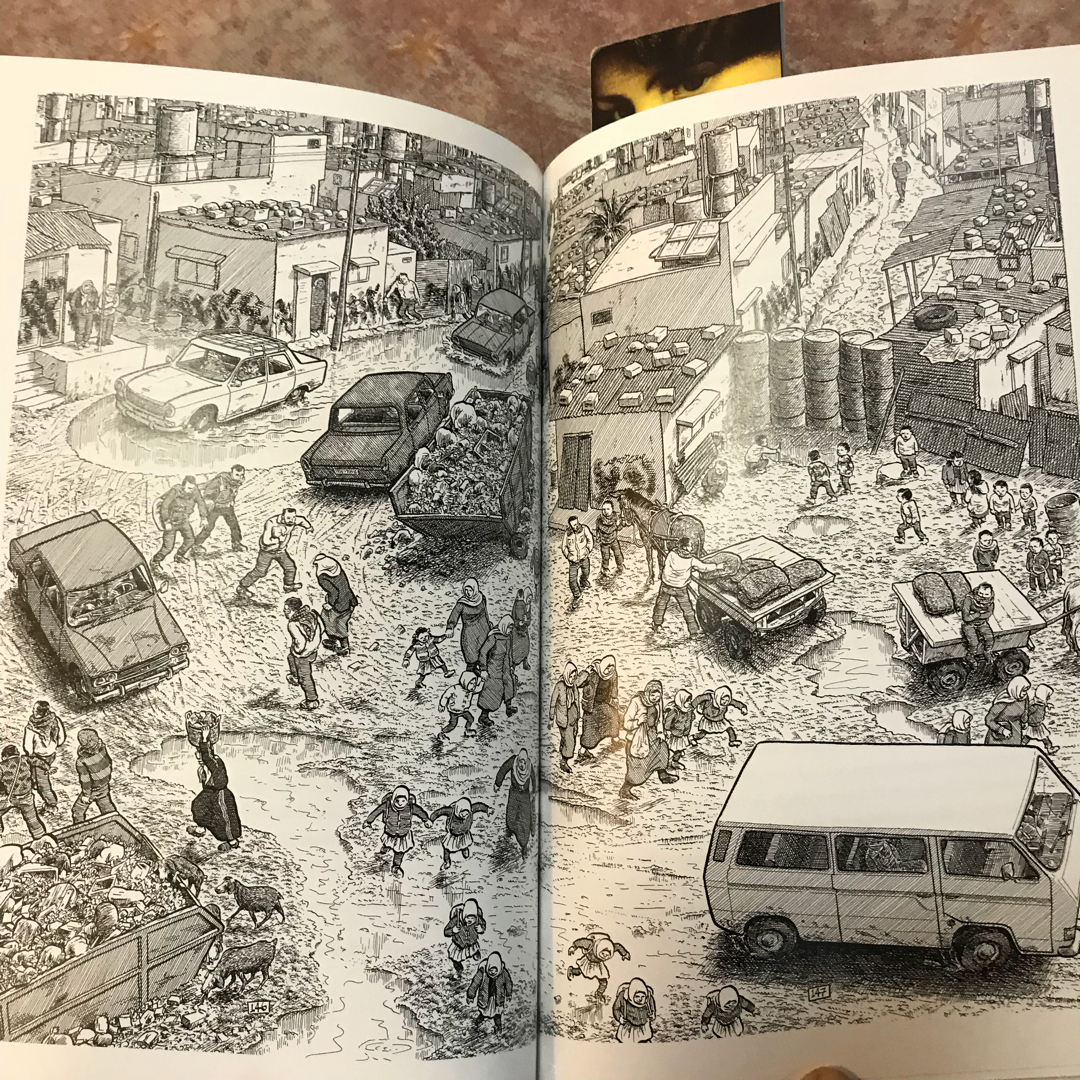
Sacco has described how landscape is a character in his comics—just as much as any person. While Sacco argues that traditional American journalism has ‘this tendency for uselessness as far as giving people a feel for what it‘s really like,‘ he contends that comics ‘is a very engaging journalistic medium‘ because ‘it allows a sense of time and place to seep in through the images.‘
(Image of a refugee camp from Sacco‘s Palestine.)
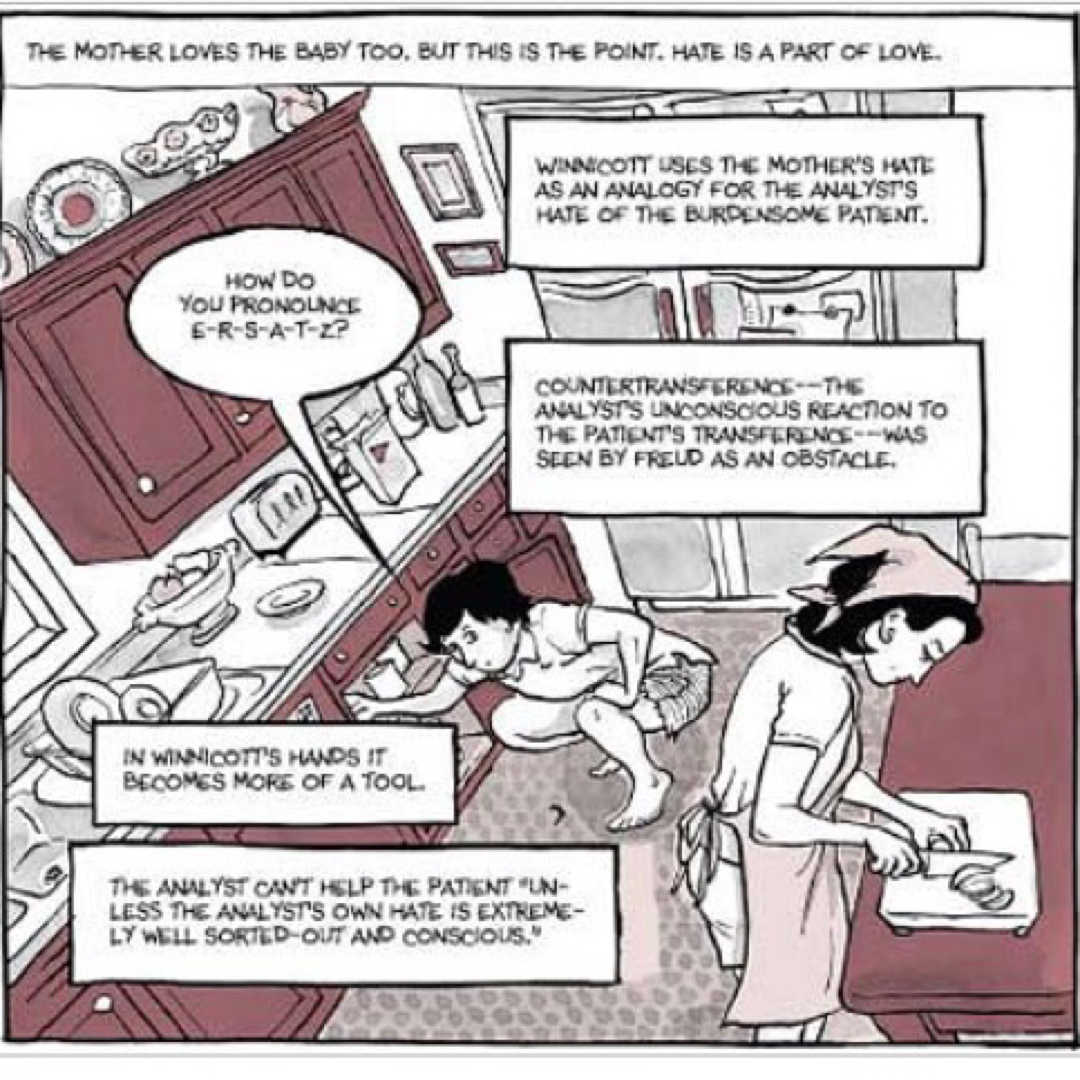
Comics is a medium that involves a substantial degree of reader participation to stitch together narrative meaning. And the visual content of comics that once signalled a ‘lesser-than‘ literacy is now an integral part of our contemporary daily lives, as so much of our primary media intake, especially online, combines the verbal and the visual, often with a complexity we have learned to navigate quickly.
[Panel from Bechdel‘s Are You My Mother]
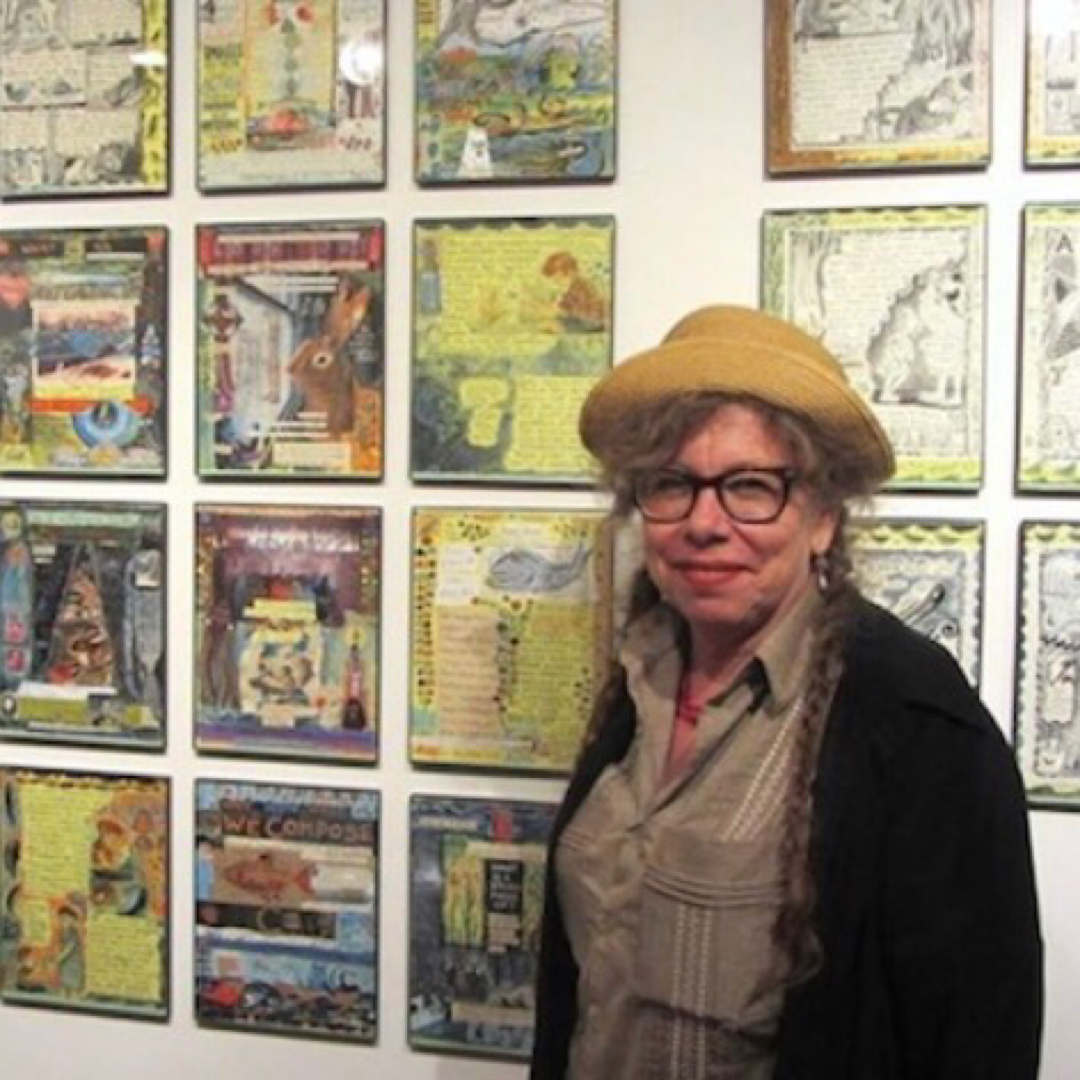
Chute writes that Lynda Barry‘s love of drawing was not valued when she was growing up. “Her mother often accused her of wasting paper when she drew, but Barry copied R Crumb‘s Zap #0 in junior high...”
That anecdote reminds me of Karen Reyes, the young protagonist in My Favorite Thing Is Monsters, painstakingly copying the covers of her brother‘s horror comics.
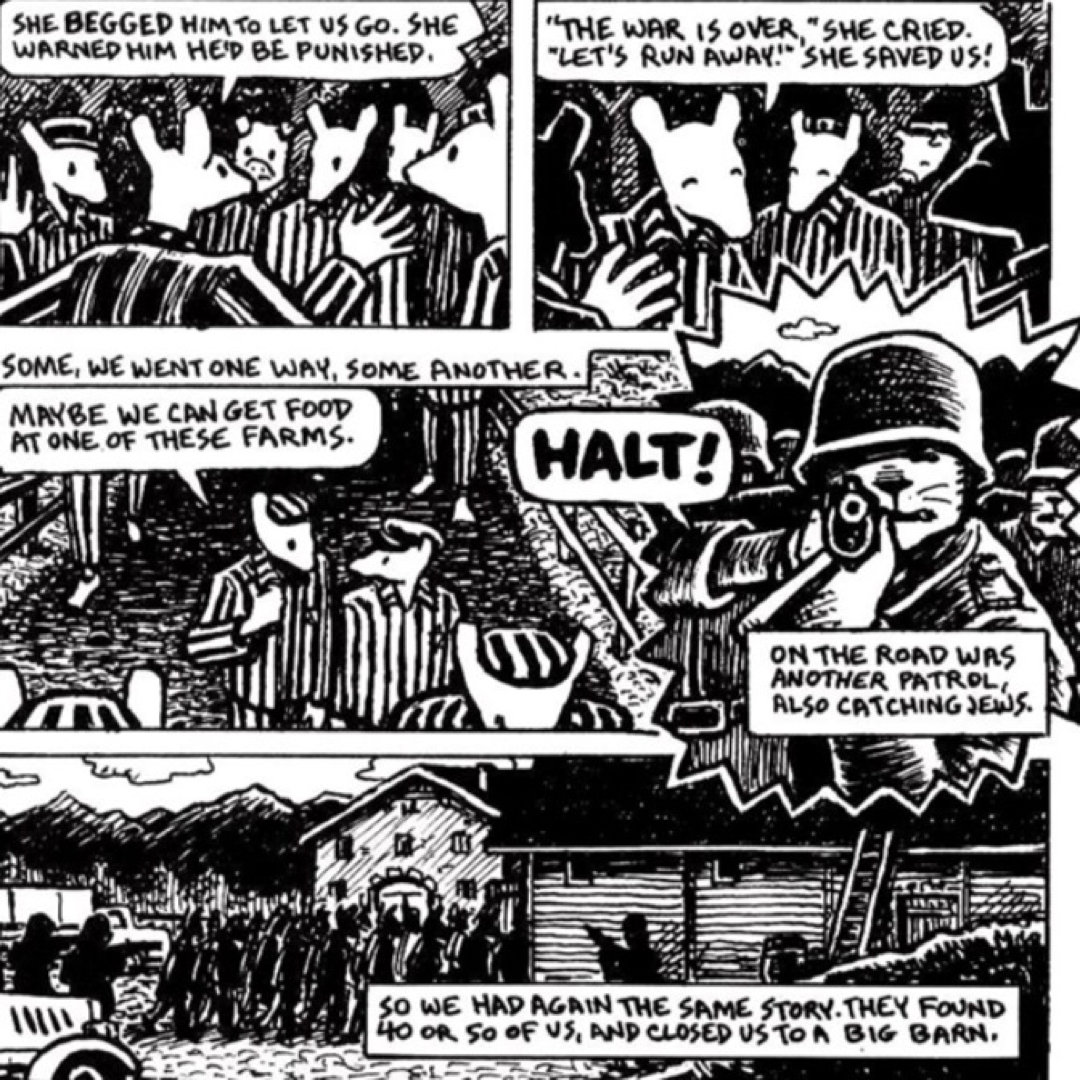
Once asked if making Maus was cathartic, Spiegelman responded that it would be like the catharsis of making “a 100-faceted wooden jewel box.” Putting one‘s experience into little boxes in space doesn‘t lend itself to the purging implied by catharsis. It‘s like building a visual, material, counter-edifice to express a mental edifice, a mental structure.
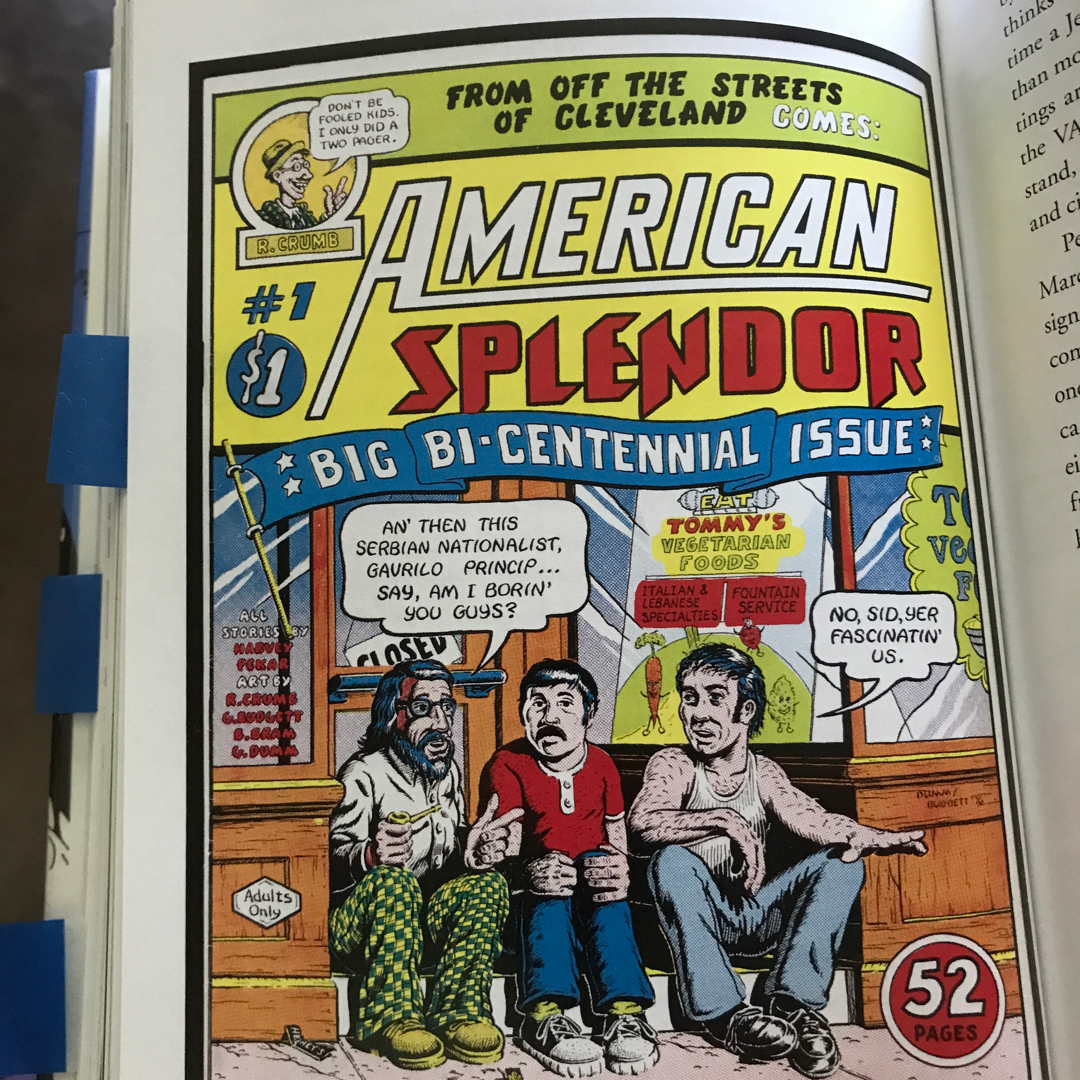
Chute‘s style is articulate and academic: “Pekar innovated comics autobiography, widening its scope to include the working-class quotidian, and showing how comics could make the rhythms of daily life, especially in public spaces, evocative and communicable.”
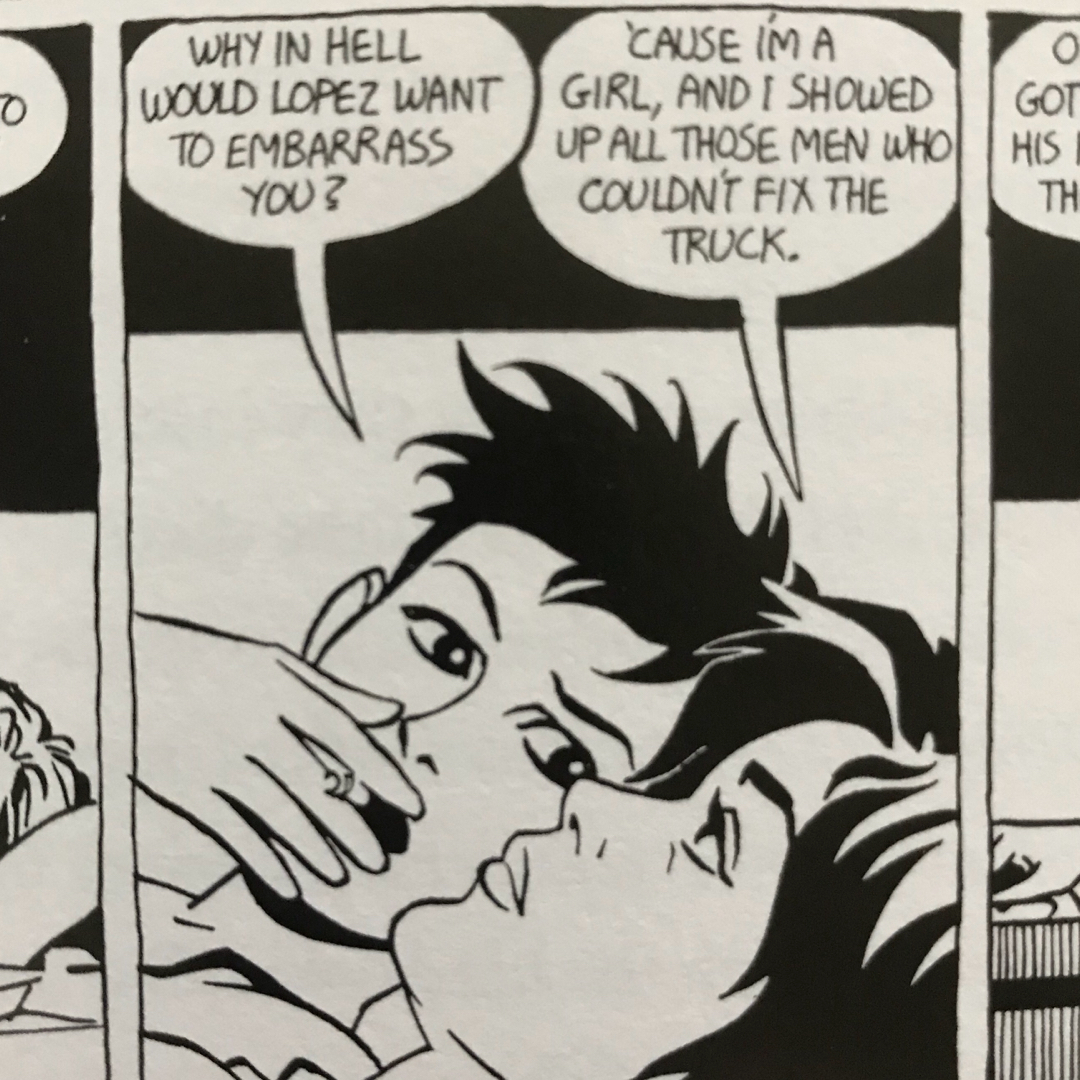
It means one thing when [Chris] Ware draws a bedroom scene of a white couple in the suburbs; it means another thing when Jaime [Hernandez] draws a bedroom scene of two Latina lesbians in a tiny, crowded apartment: comics as a way to put marginalized bodies and psyches on the page. [Above, Maggie and Hopey “discuss the thorny intersection of gender, work, and immigration.”]
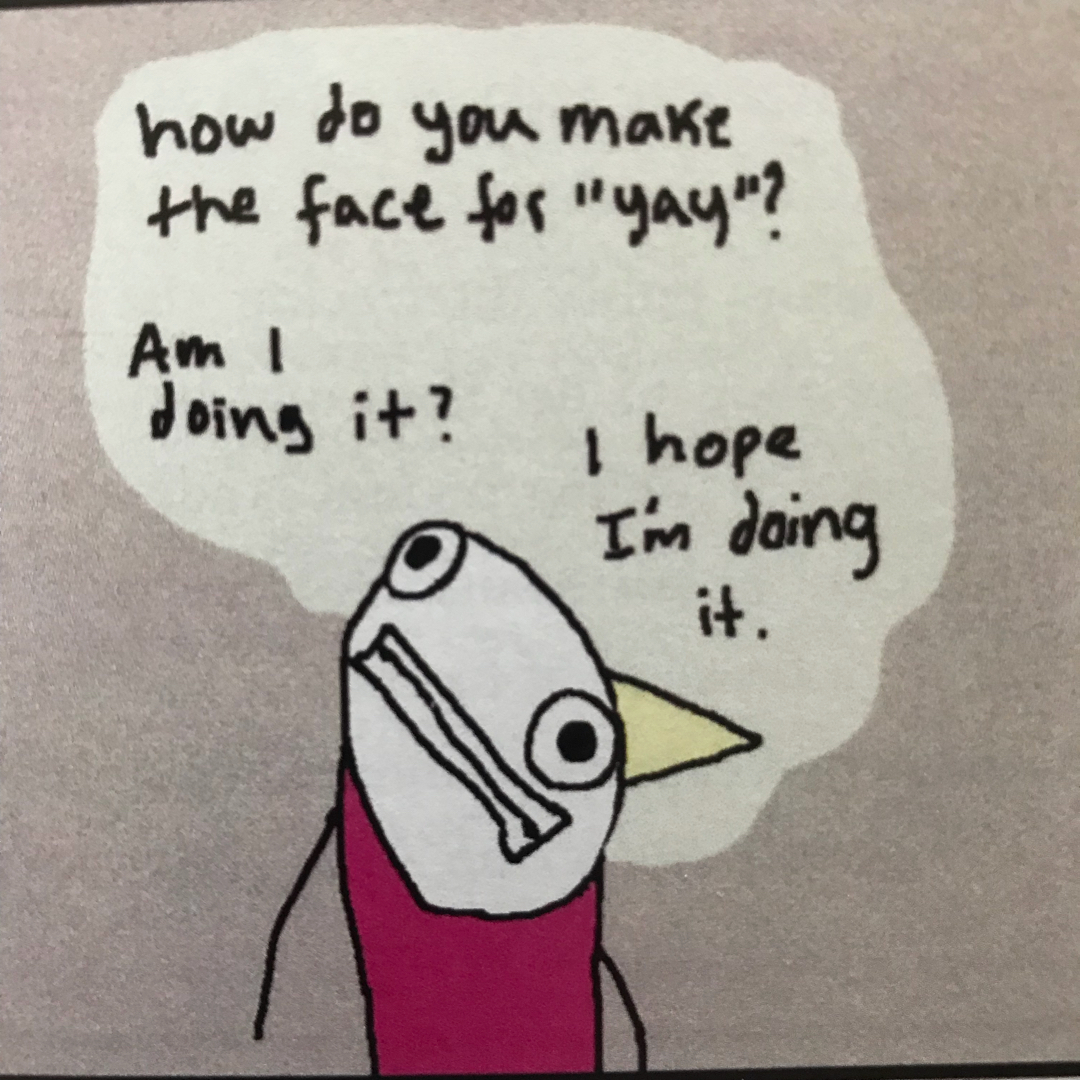
The success of Hyperbole and a Half points to the vital, open creativity of webcomics—an easy-to-circulate platform that gives artists and biology majors alike a space to produce stories that address illness and disability, among so many other topics, and to share them meaningfully.

Gary Panter: “I like cruddy stuff. I always liked bad drawing.”
Hillary Chute: “For Panter, ‘bad drawing‘ is when the shakiness of the hand is intentionally evident. Its unevenness or looseness, as opposed to being concealed and corrected, becomes part of the surface of the page.”
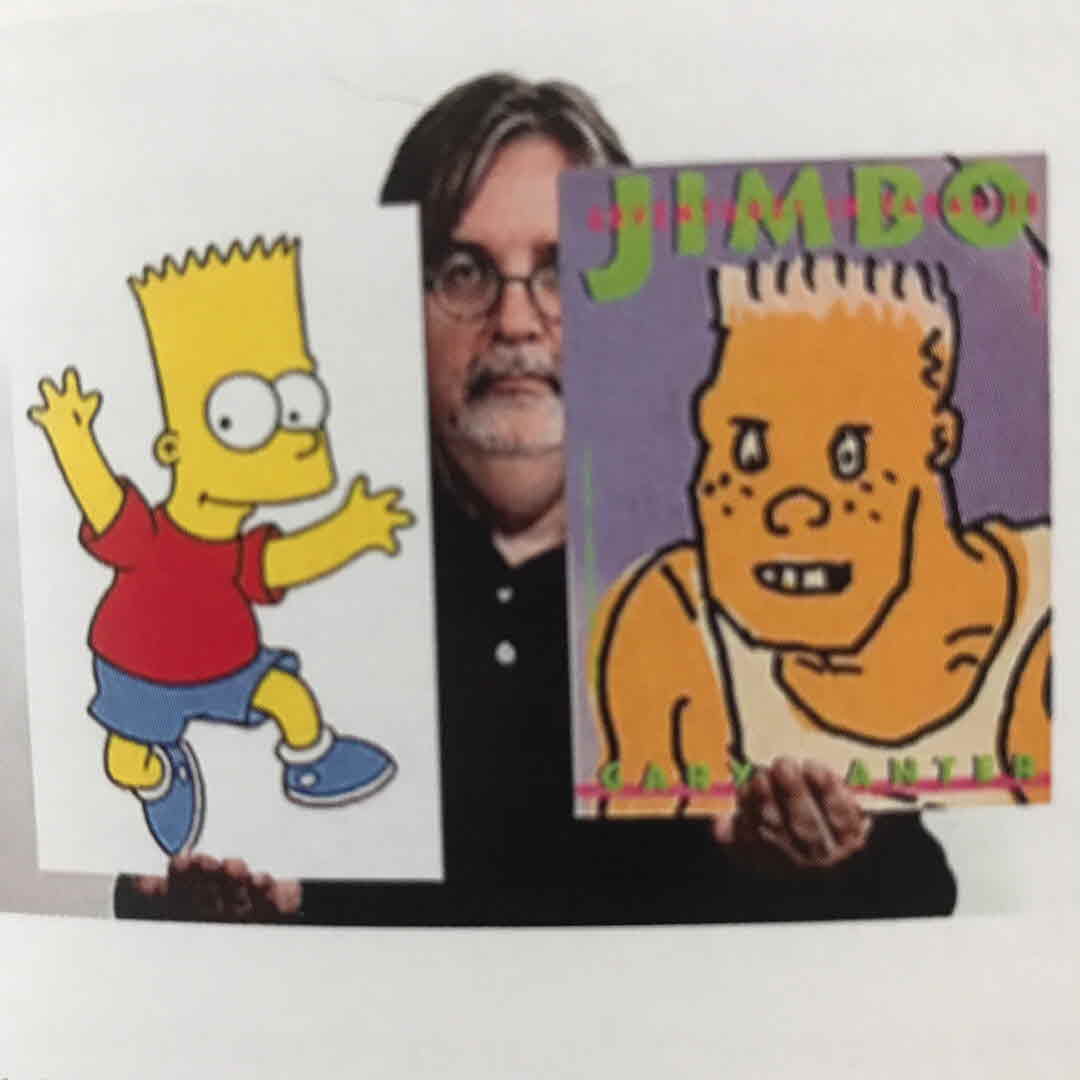
Bart‘s iconic hairline is lovingly lifted from cartoonist Gary Panter‘s punk everyman character Jimbo and his spiky hair—meaning that one of America‘s most beloved pop culture characters actually springs from a key figure in its groundbreaking punk scene.
(Above: Matt Groening comparing images of his Bart Simpson and Panter‘s Jimbo.)
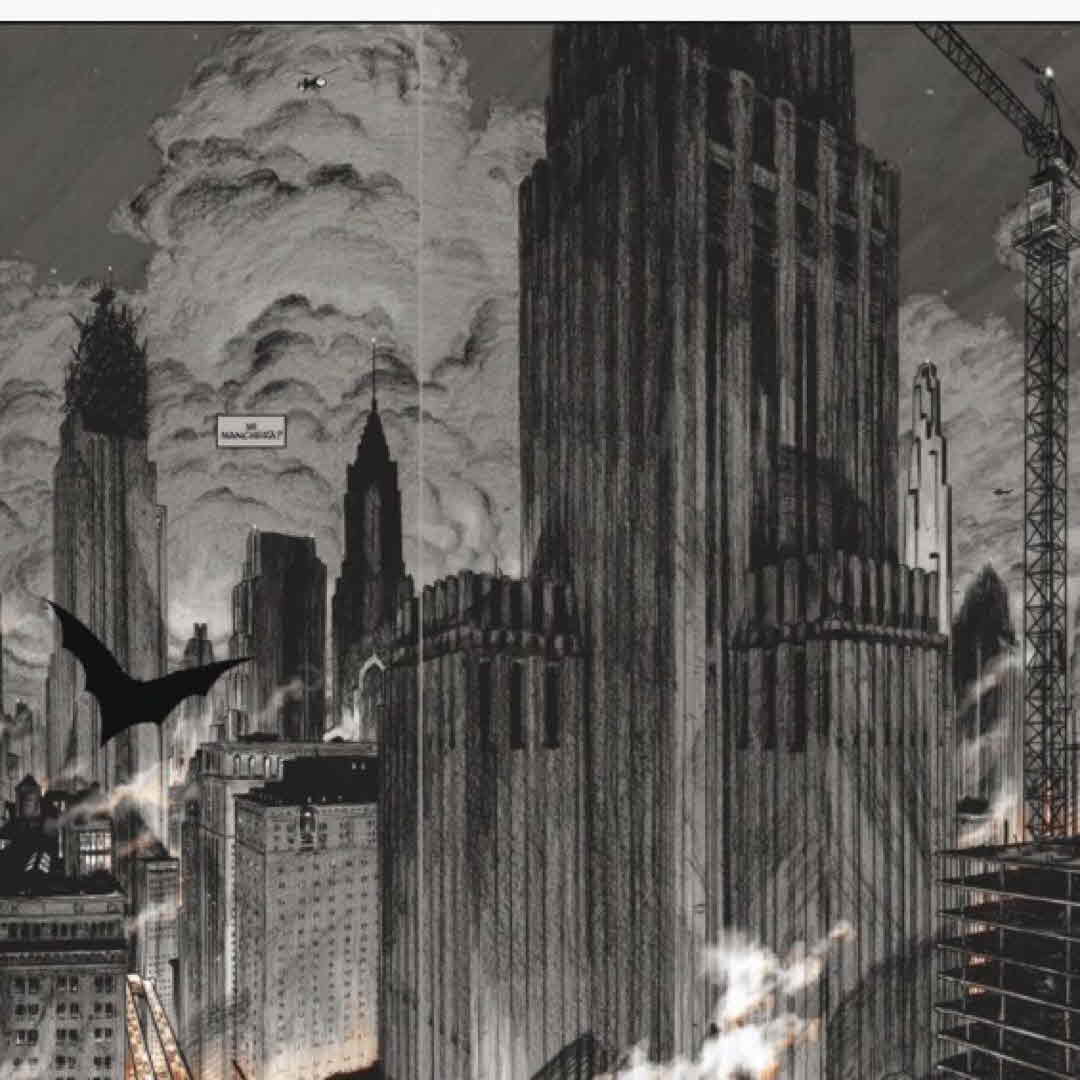
Comic-book superheroes are also tied to cities: Superman to Metropolis, Batman to Gotham City, Spider-Man to New York City. The first two can be understood as fictionalized versions of New York: comics writer Frank Miller says that Metropolis is New York in the day, and Gotham is New York at night.
(Image is from Batman: Death by Design)
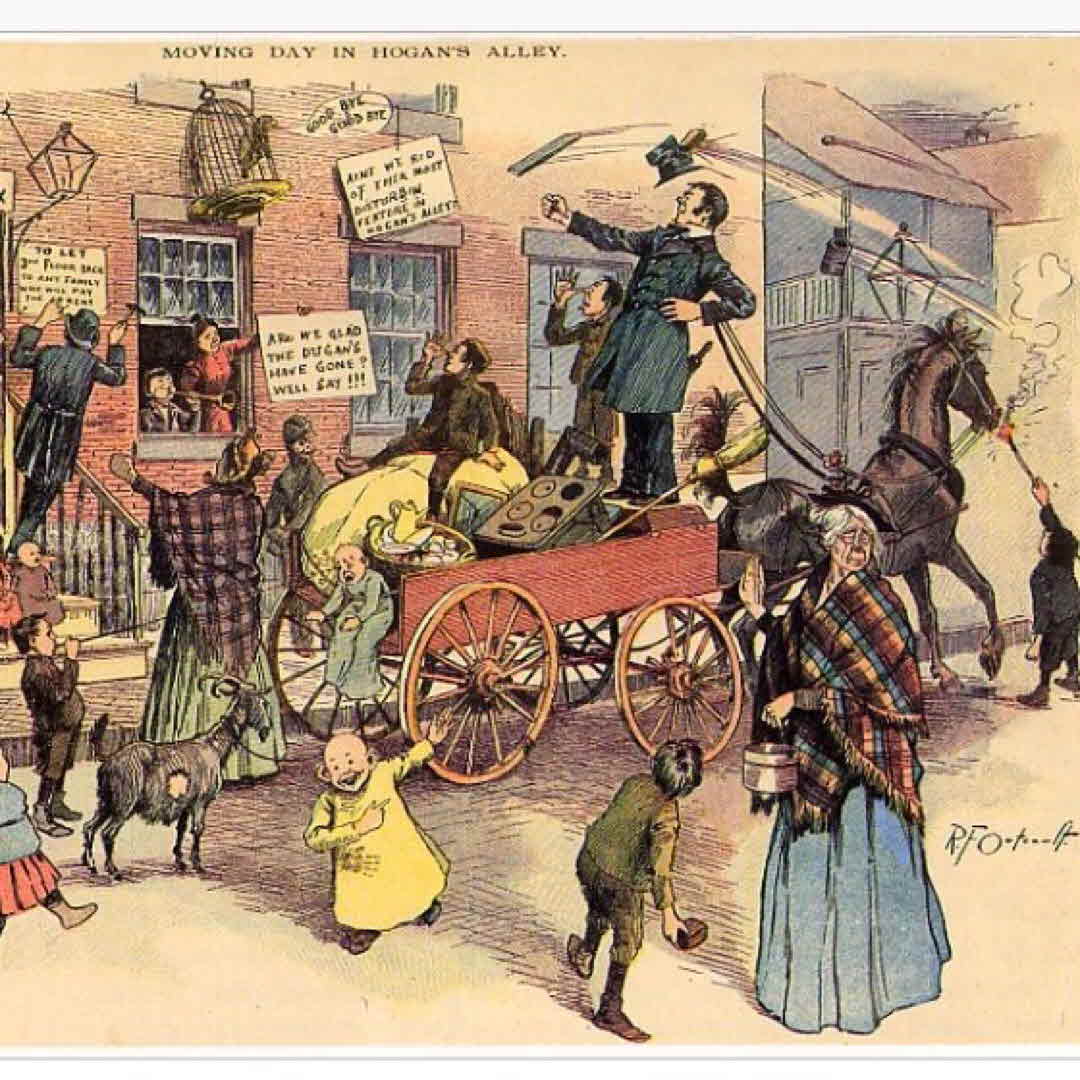
The first comic strip, in 1895, titled ‘Hogan‘s Alley‘ but known as ‘The Yellow Kid‘ starred a Lower East Side tenement Irish guttersnipe who got his nickname from his dingy yellow nightshirt. He would inspire the term ‘yellow journalism.‘
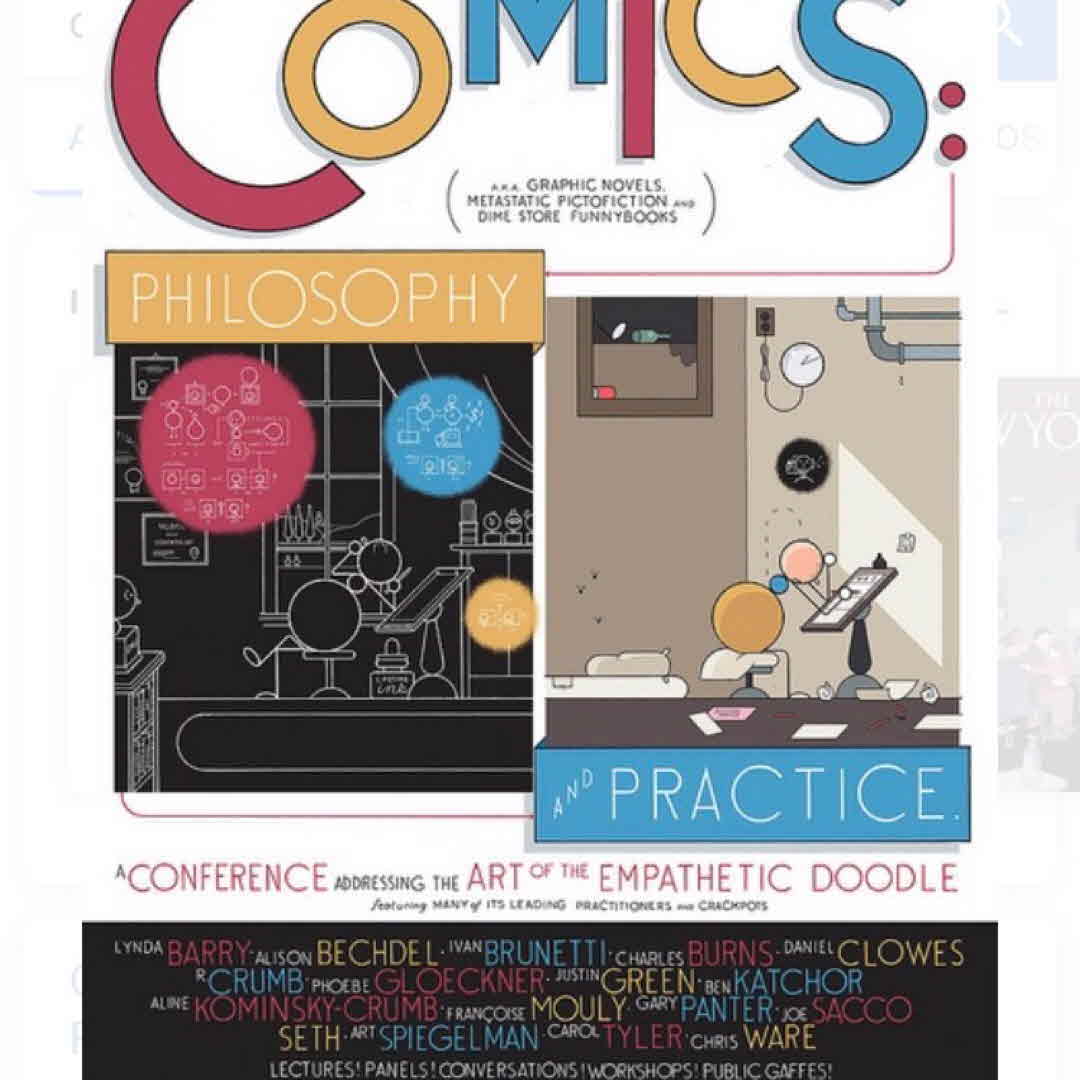
In a section where Chute is writing about Chris Ware, she mentions that he designed the poster for a comics conference that she organized in 2012. Reading that, I thought, “Wait a minute! I know that poster! I remember that conference because I was there.” I didn‘t connect Chute‘s name with it, however. It was a memorable weekend in Chicago. Highlights are still online here: https://www.uchicago.edu/features/20120730_comics/
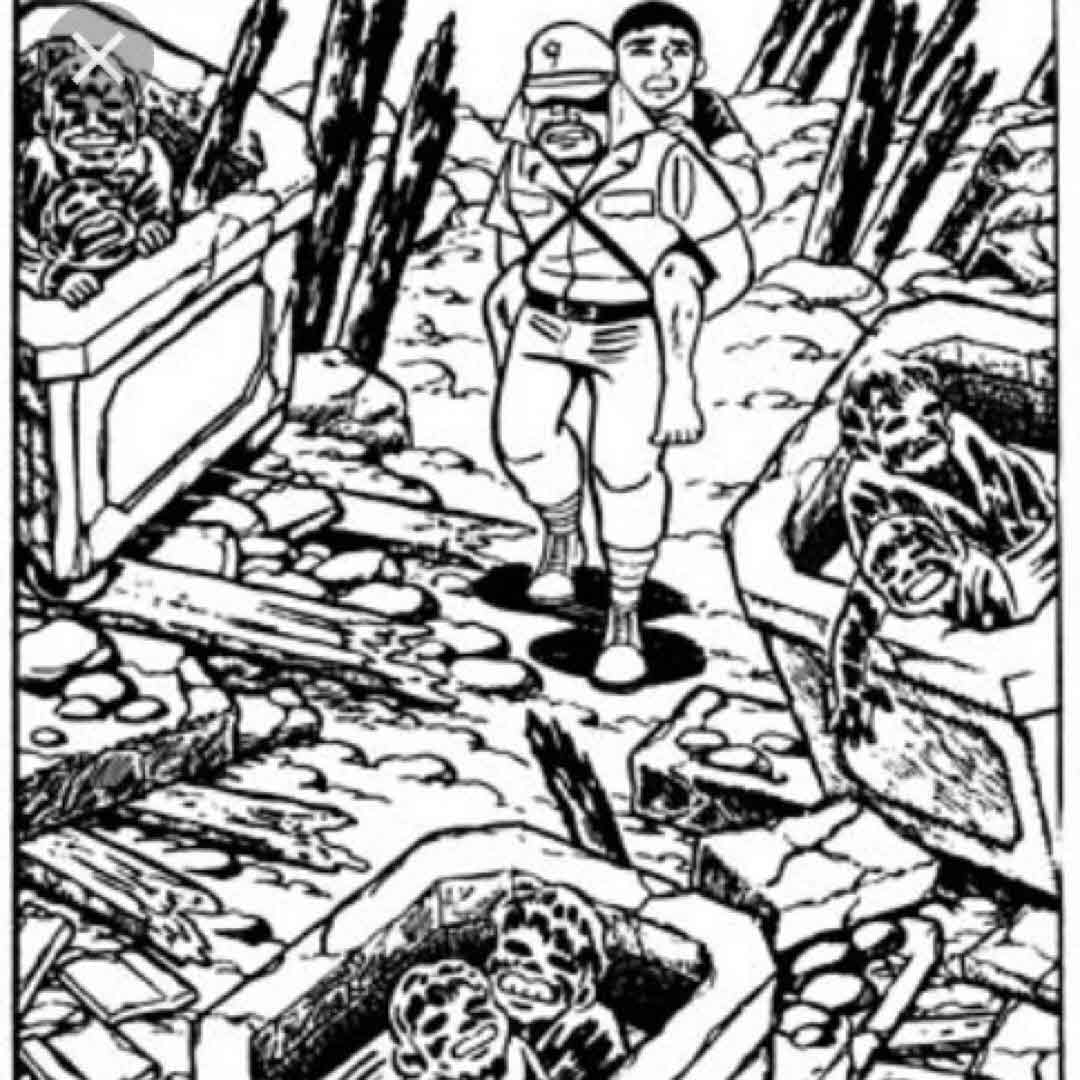
As a boy after the war, Nakazawa could not afford paper to draw on, so he tore down movie posters from city streets and handcrafted books from them. He would cut the posters to size, stitch them into notebooks, and pencil his comics illustrations on their white backs.
(Image above is from Keiji Nakazawa‘s Barefoot Gen, which is about his experiences in Hiroshima.)
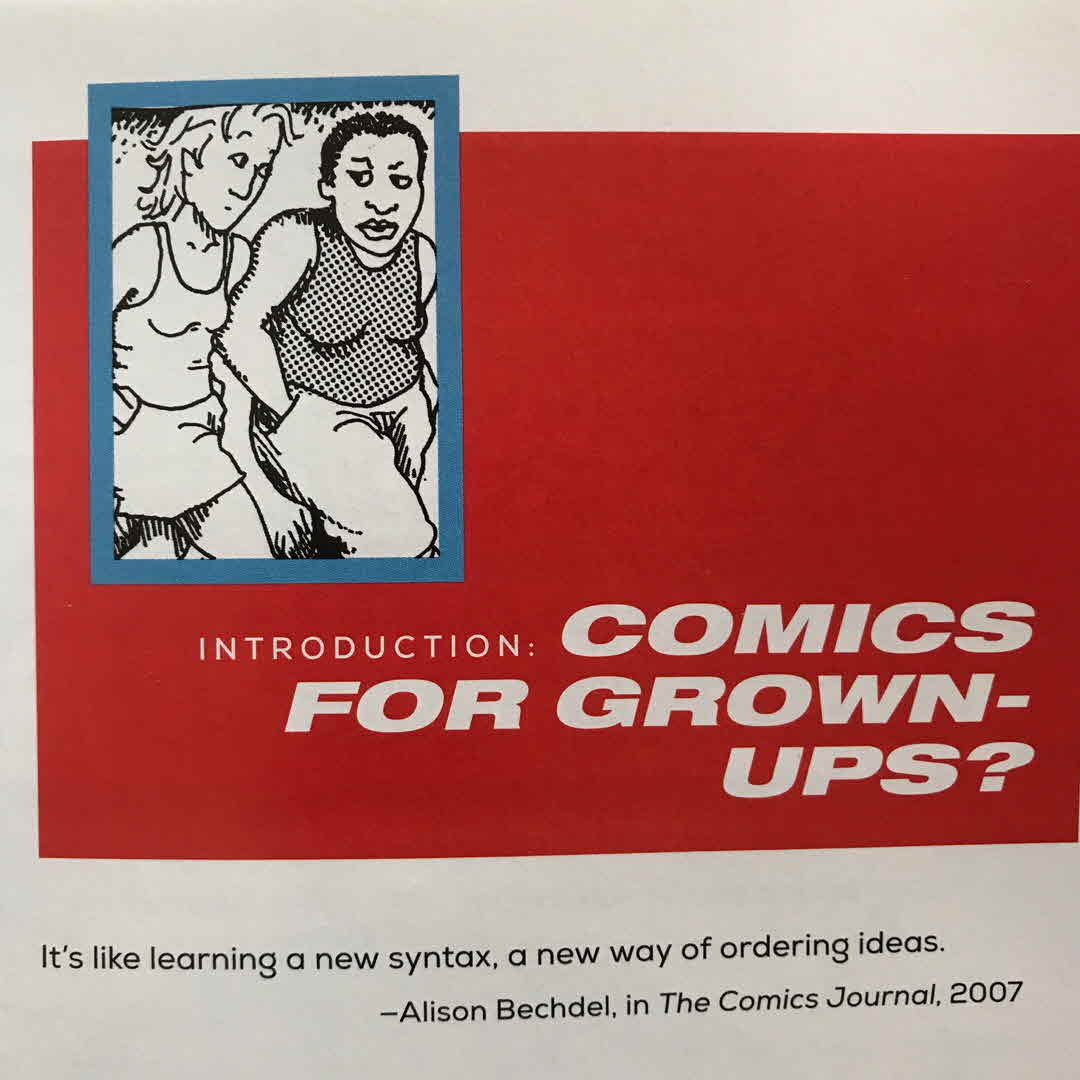
Comics is not an illustrative form, in which the words and images match, but rather one that Marjane Satrapi has called ‘narrative drawing‘ and Art Spiegelman has called ‘picture writing,‘ in which the words and the images each move the narrative forward in different ways the reader creates out of the relationship between the two.
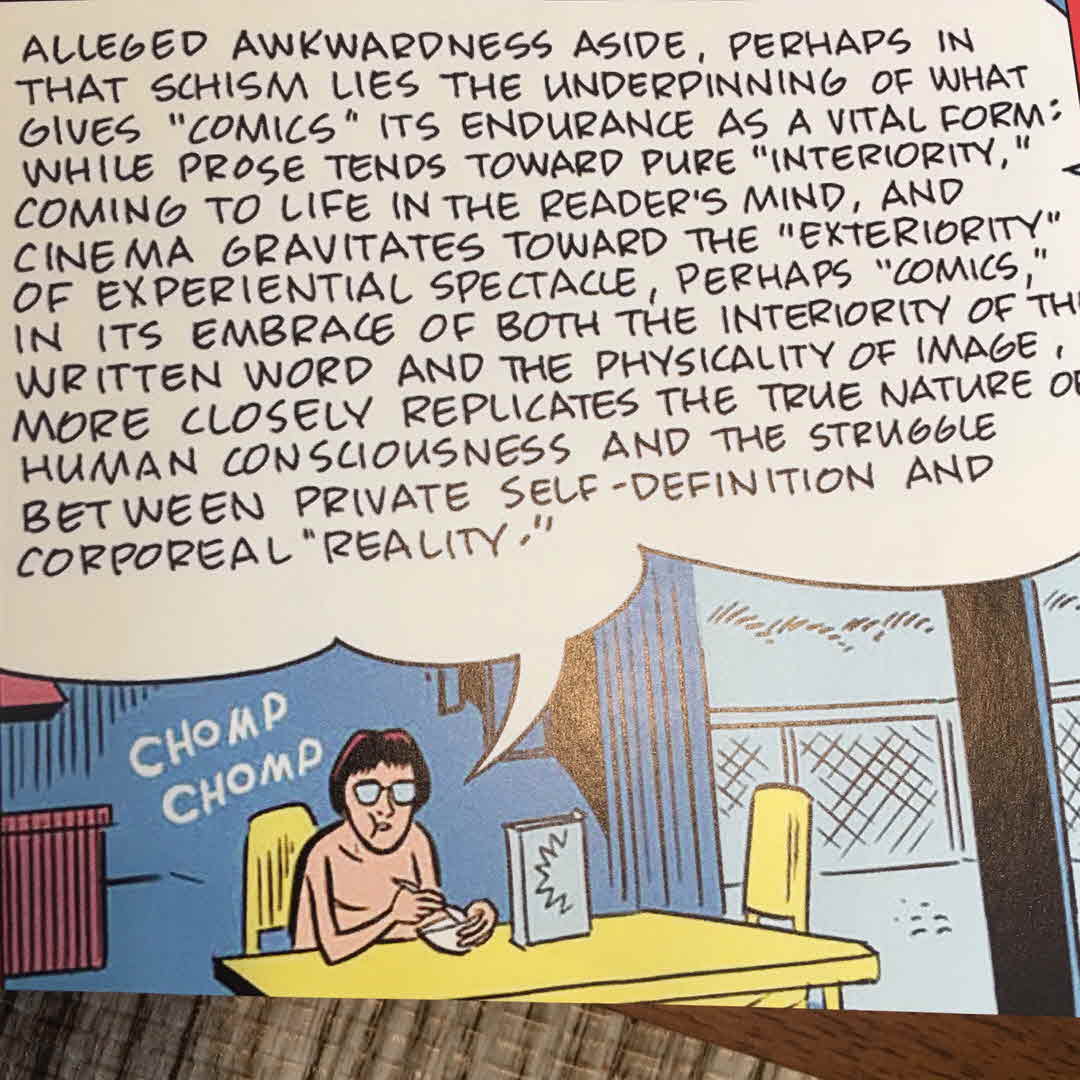
This is #teaching but Omg! I may become a convert yet. 📚❤️